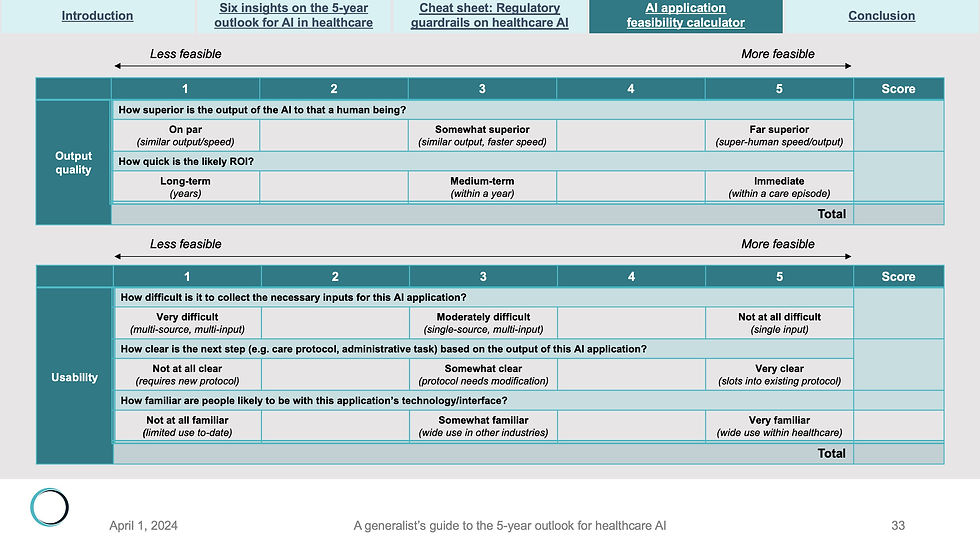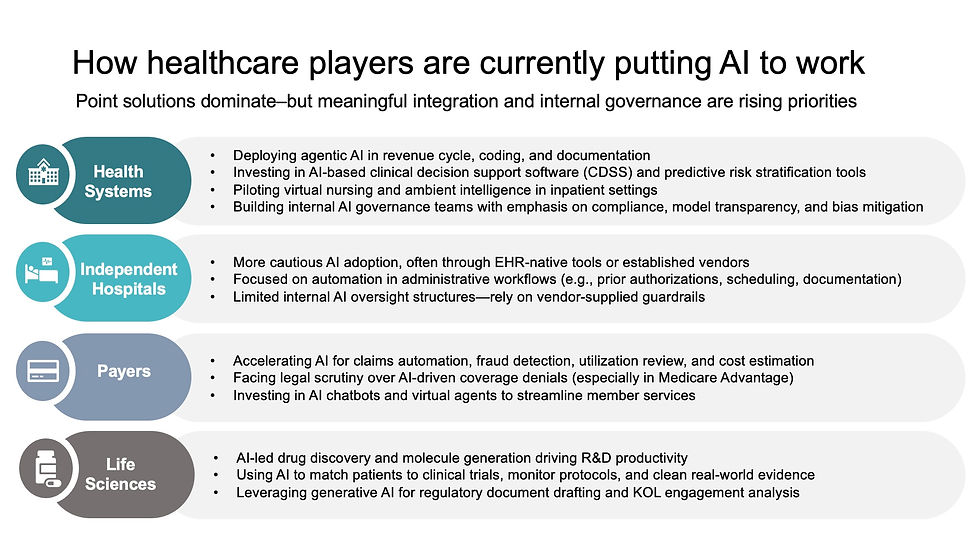How to judge a good AI investment
- Christopher Kerns

- Apr 10, 2024
- 2 min read
Updated: Jul 19, 2024

You've probably noticed that we—not unlike literally everyone else—have been covering artificial intelligence quite a bit lately. We've provided a primer on how execs should think about the tech, its impact on creating real economies of scale in care delivery, its potential to ignite a new revenue cycle arms race, and finally a bootcamp (link for members) to get execs up to speed on the most important issues. And while it might seem like a trend that everyone is chasing, if that's all it were, we wouldn't be delving into it so frequently.
In the past few months, our executive conversations have shifted from post-pandemic keep-our-head-above-water challenges to more strategic dialogues focused on the future of healthcare development and delivery. This is good news, because it not only expresses optimism about the state of the industry and investment, but also intentionality about near-term decisions. Leaders increasingly have the capacity to take in new information, make deliberate choices about the future, and think clearly. And the strategic stakes surrounding AI could not be higher. But that really just ensures two things: (1) Chief Anything Officers are getting bombarded with AI-based solutions (which are often, but not always, in search of a problem); and (2) seemingly every solution is AI-powered (spare me). Look, we know. We know.
So this week's Slide [Download] of the Week is the AI Feasibility Calculator from our recent book on the five-year outlook for healthcare AI (link for members). After providing a thorough look on the technology's potential, its current applications, and likely limitations, we provide a framework for evaluating AI project through six lenses:
Output quality
Usability
Workforce impact
Stakes
Regulatory outlook
Ease of adoption

Some readers might find one or more of those categories more important than others, and will weight them accordingly. But no matter what, we encourage all leaders to, at the very least, evaluate AI solutions from all six perspectives before committing. And to our AI-vendor colleagues: have answers at the ready to the questions we pose.
If you'd like get access to the full report, and are already a member, click here. And if you're not yet a member, but would like to learn more or get access to the report, click here.




Comments